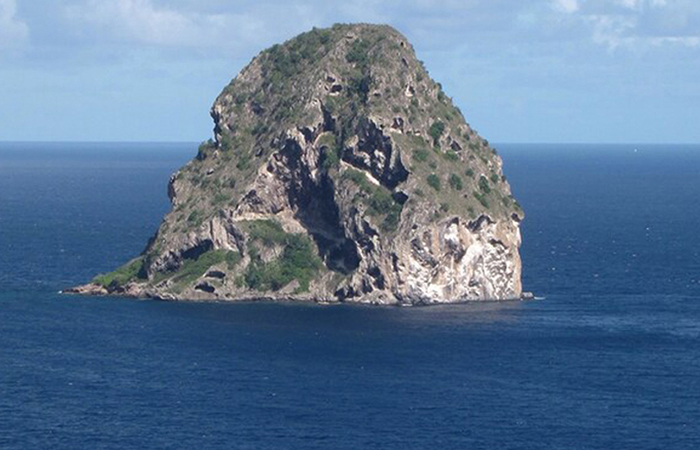
From massive sunken craters and intricate volcanic labyrinths to ancient sunken temples, the oceans of the world are filled with mysteries and wonders. And while visiting some of these sites might require a full-scale expedition, others can be viewed while visiting popular dive resorts. Here are five unusual underwater formations to add to your list.

EYE OF THE NEEDLE, SABA
In contrast to the coral reefs and walls surrounding many Caribbean islands, Saba's underwater landscapes are volcanic in origin, and include some pretty spectacular formations. The island's must-see dive site is known as the Eye of The Needle. It's found among a group of coral and sponge-covered volcanic pinnacles that rise from deep water off the island's southeastern coast. The pinnacles attract an abundance of fish life, including big groupers, turtles, gray reef and black-tip sharks. The needle sits alone a short distance from the larger formation, rising to a depth of 55 feet. Dive operators on Saba visit the Needle, but the easiest way to reach the site is aboard a liveaboard such as the Caribbean Explorer II.

THE BLADE, INDONESIA
The Blade is a rock ridge that rises from depths of beyond 200 feet to within 60 feet of the surface. Spaced along the crest of this ridge are a series of small sea mounts that continue upward to around 15 feet. Seen in profile, it's easy to see how this unique geological formation got its name, as the upper mounts create the illusion of a long-serrated knife. Seen from above, the Blade is even more amazing, as this perspective reveals the extremely thin profile of the formation. The individual teeth of the blade are less than 20 feet wide, and a diver drifting over the tops can see down both sides of the formation simultaneously. In addition to the geological wow factor, Blade is heavily covered in soft corals and giant sponges, and riddled with crevices and small caverns that beg for investigation. Blade is visited by dive boats from Wakatobi Resort.

BIMINI ROAD, BAHAMAS
The Road is a long row of rectangular rocks arranged in a symmetrical pattern parallel to the nearby shore of North Bimini Island. The discovery of this shallow-water structure in 1968 generated a flurry of interest among devotees of the myths of Atlantis. In addition to speculations on the mythical nature of the Road, marine archaeologists also postulated that it might be the remains of an ancient landing pier constructed by prehistoric people during a time of lower sea levels. However, decades of scrutiny have failed to reveal tool marks on the rocks that would indicate they were man-made, and scientific analysis confirms that the site is a natural formation created by erosion. Though the myth may be busted, the Bimini Road is still an interesting second dive that is offered by operators such as Neal Watson's Bimini Scuba Center.

LONDON BRIDGE, TOBAGO
Just off the northern coast of the island of Tobago, the formation known as London Bridge is an above-water rock spire perforated by a large arch. The arch continues underwater, giving divers a unique opportunity to swim below the bridge. While surrounding waters are more than 100 feet deep, the swim through the arch is a relatively shallow dive profile. Though depth isn't an issue, this site is recommended for experienced divers, as there is often a bit of current and surge to contend with. The swim begins in a wide tunnel that gradually narrows to a cleft not much wider than a single diver, then opens to a field of massive boulders strewn across a sand bottom. Visiting the London Bridge is weather dependent, as it is reached by an open-water boat ride from dive resorts such as Blue Waters Inn and Manta Suites in the Speyside region.

DIAMOND ROCK, MARTINIQUE
Diamond Rock is a noted landmark on the southwest coast of the island of Martinique. Divers visit the site for an opportunity to dive through a cavern that runs through the base of the formation at a depth of around 75 feet. While the swim-through is memorable, the most interesting aspect of diving underneath this 570-foot volcanic peak is its unique and colorful history. In the age of sail, the rock was commandeered by the British Navy as a gun battery to harass passing French ships. After hauling heavy cannons up ta sheer cliff, the admiralty issued a commission naming this remote hunk of basalt as the HMS Diamond Rock, a British sloop of war. Today, this designation remains in the books, which means that divers who visit the rock are technically performing a shipwreck dive. The site is visited by operators in the Trois Islet and Grande Anse d'Arlet regions.
Ready to explore these unique underwater formations? Caradonna works with top operators in each of these areas and can plan your next diving adventure.